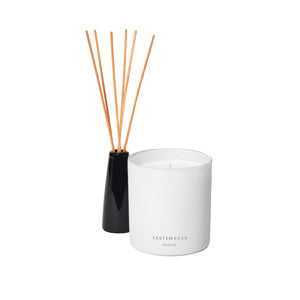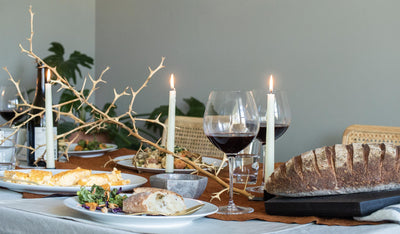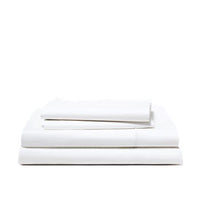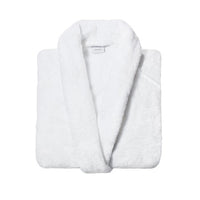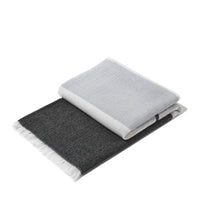What are duvet covers? If you're shopping for new bedding, you might hear about duvet covers. But what are they exactly, and why are they important?
Imagine a duvet cover as a big pillowcase for your soft duvet blanket. Its main job is to keep your duvet clean and protected.
Duvet covers come in different materials, like cotton, linen, or silk, and in many colors and designs to match your style. There are three main types: percale, sateen, and linen duvet cover.
Percale duvet cover queen are known for being crisp and breathable. For those who like a cool sleep, cotton percale duvet covers are also a good choice for their durability, softness, and breathability, making them perfect for your sleeping comfort. Sateen duvet cover queen are shiny and smooth, giving them a luxurious feel. You may also choose a cotton-sateen duvet cover known for its warmth, wrinkle resistance, and softness, offering comfort during sleep.
Linen duvet covers are durable, breathable, and hypoallergenic, and if you prefer aesthetics, the Striped Linen Duvet Cover is also the best choice if you prioritize bedroom aesthetics; it is known for its appearance and gets softer with each wash, adding timeless elegance to your bedroom. Each type has its special features, so you can pick the one that suits you best.
One cool thing about them is that they're easy to take off and wash, so you can keep your bedding fresh. Plus, they're not as bulky as regular comforters, so they're easier to store and move around.
When it comes to creating a comfortable and cozy bed, there are a few important pieces of bedding that you simply can't do without. Let's talk about the key stuff: duvet covers, comforters, and blankets.
Duvet Covers
A duvet cover is a protective sleeve that fits over a duvet insert, which is typically filled with down or down-alternative fibers. The cover helps to keep the duvet clean and protected from wear and tear, while also allowing you to easily change up the look of your bedding.
Duvet covers come in a wide range of materials, colors, and designs, so you're sure to find one that suits your style.
Comforters vs. Duvets
Comforters and duvets are both kinds of blankets you put on your bed. They're a bit different, though.
A comforter is just one piece. It's filled with stuff like feathers or synthetic fibers, and you use it on your bed without covering it.
A duvet is made of two parts: a soft blanket inside (called a duvet insert) and a cover that goes over it. You use them together.
The cool thing about duvets is you can change the cover to give your bed a new look without changing the blanket inside. It's like giving your bed a costume change! bulky as regular comforters, so they're easier to store and move around.
Blankets Purpose
Blankets are important for a comfortable bed, but they serve a different purpose than duvets and comforters.
Duvets and comforters keep you warm, while blankets are often used for decoration or added warmth on cold nights.
How to Choose a Good Quality Duvet Covers
When it comes to choosing the right bedding, there are several factors to consider. From materials and fabrics to sizing and fit for your mattress, to design and style, you want to make sure that your bedding meets your needs and preferences.
Materials and Fabrics
The material and fabric of your bedding can affect your comfort and the overall appearance of your bedroom.
Some common materials for duvet covers include cotton, linen, silk, polyester, and flannel.
Cotton is the most commonly used material for duvet covers as it is easy to maintain, soft, and comfortable.
Silk duvet covers are luxurious and have a soft, smooth feel.
Polyester duvet covers are durable and affordable, but they may not be as breathable as other materials.
Flannel duvet covers are great for colder months as they are warm and cozy.
Sizing and Fit for Your Mattress
It is important to choose the right size duvet cover for your mattress to ensure a proper fit.
Duvet covers come in sizes for every type of bed available on the market, such as king and full/queen.
You should also consider the depth of your mattress when choosing a duvet cover to ensure that it fits properly.
Design and Style
The design and style of your duvet cover can affect the overall appearance of your bedroom.
Duvet covers come in a variety of colors, patterns, and styles, such as reversible duvet covers, chambray, matelasse, and embroidered duvet covers.
When choosing a duvet cover, you should consider the color and pattern of your mattress, as well as the overall style of your bedroom.
Why Choose Duvet Covers?

Ease of Use
Duvet covers are easy to use and can make your bed look more stylish and put-together.
They usually have ties, buttons, or a zipper closure to keep the duvet insert in place. Some duvet covers also have corner ties to secure the insert even more.
With a duvet cover, you can easily change the look of your bedding without having to buy a whole new comforter.
Maintenance and Care
Duvet covers are easy to care for and can help prolong the life of your duvet insert.
They are usually made of durable materials that can withstand washing and wear and tear.
Most duvet covers can be washed in the washing machine and dried in the dryer. However, it is important to follow the care instructions on the label to prevent shrinkage or damage to the fabric.
Comfort and Quality
Duvet covers come in a variety of fabrics and materials, so you can choose one that suits your preferences for comfort and quality.
Some popular options include cotton, linen, and microfiber.
Cotton is soft and breathable, while linen is lightweight and airy. Microfiber is a synthetic material that is soft and fluffy.
Consider the thread count of the fabric when choosing a duvet cover. A higher thread count usually means a softer and more durable fabric.
When it comes to choosing the right duvet cover, seasonal and temperature considerations are crucial. You want to ensure that you stay comfortable and cozy throughout the year, no matter the climate changes.
Adapting to Climate Changes
The temperature of your bedroom can vary significantly throughout the year, and you need a duvet cover that can adapt to these changes.
During the summer months, you'll want a lightweight duvet cover that keeps you cool and comfortable.
Cotton duvet covers with a percale weave are an excellent option for this purpose. They are breathable, lightweight, and offer a crisp and cool sensation.
In contrast, during the winter months, you'll want a duvet cover that provides extra warmth and insulation.
You can opt for a medium-weight duvet cover with a tog rating of 7-10.5. Natural fillings like down or feathers offer excellent insulation while allowing breathability. A sateen weave duvet cover is also an excellent option for winter as it has a smoother, silkier finish.
Insulation and Warmth
The insulation and warmth of your duvet cover are critical to ensure a good night's sleep, especially during the colder months.
The fill power of the duvet cover directly affects its insulation and warmth. The higher the fill power, the better the insulation and warmth.
When choosing a duvet cover, consider the fill power and the tog rating. A higher tog rating means a warmer duvet cover.
If you live in a colder climate, you'll want a duvet cover with a higher tog rating. However, if you live in a warmer climate, you'll want a duvet cover with a lower tog rating.
When seeking the perfect duvet cover that won't break the bank, focus on key factors:
Material: Opt for cost-effective yet durable fabrics like cotton blends or microfiber.
Thread Count: Aim for a balanced thread count that offers quality without unnecessary expense.
Durability: Look for reinforced stitching and quality materials that promise longevity despite the lower price point.
Size and Fit: Ensure the cover matches your duvet insert's dimensions to avoid additional costs or returns.
Care and Maintenance: Choose covers that are easy to clean and maintain, saving you time and money in the long run.
Additional Features: Seek out bonus features like zipper closures or corner ties that add value without added expense.
By considering these aspects, you can find the best affordable duvet cover that meets both your budget and quality expectations.
Conclusion
Duvet covers seamlessly blend practicality, style, and comfort, making them essential for your bedding. Whether you prioritize easy cleaning, versatile design, or durability, duvet covers provide the perfect solution for a cozy and stylish bedroom.
Invest in a quality duvet cover to enhance your sleep experience and add beauty to your bedroom. Elevate your bedding with a duvet cover that reflects your style and meets your needs.
Check out our premium duvet cover collection and discover a wide selection of options in various materials, colors, and designs. Create your dream bedroom today!
Frequently Asked Questions

Can I use a duvet cover to protect my comforter from pet hair and stains?
Yes, using a duvet cover is an excellent way to protect your comforter from pet hair, stains, and general wear and tear. Simply remove and wash the cover regularly to keep your bedding fresh and clean.
Are duvet covers suitable for allergy sufferers?
Yes, hypoallergenic duvet covers made from materials like cotton or silk can be suitable for allergy sufferers. Look for covers labeled as hypoallergenic or allergy-friendly for added peace of mind.
How do I prevent my duvet insert from bunching up inside the cover?
Look for duvet covers with corner ties or loops that attach to the corners of the duvet insert to keep it in place. Alternatively, you can sew your own ties onto the corners of the duvet insert to secure it inside the cover.
How often should I change my duvet cover?
It's recommended to wash your duvet cover every 1-2 weeks to maintain cleanliness and hygiene. However, you can change it more frequently if needed, especially if you sweat a lot during sleep or if it gets visibly dirty.








